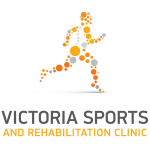“I have creaky knees, it must be time for a cleanout!” This is something that we hear time and time again in the clinic from patients suffering from creaky, clicky or grinding knees. Knee arthroscopies (or commonly referred to as cleanouts) were previously common practice for this, recommended by general practitioners and surgeons as the best method for treatment and reducing pain. According to research conducted by the American Orthopedic Society for Sports Medicine, worldwide 4 million people undergo this surgery each year, however there has been a lot of brewing scepticism on the improvement of patients pain and function. This has led to many research studies comparing an arthroscope to conservative measures, many of which now are only getting attention with mainstream media.
In 2002 the New England Journal of Medicine conducted a randomized placebo controlled trial in which they studied 180 participants with osteoarthritis in the knees. The groups either received 2 one of two variations of arthroscopic surgery (either a lavage or a debridement), or a placebo surgery. The arthroscopic lavage involved the patient’s knee joint being flushed with at least 10 litres of fluid to help clear the joint. The debridement involved the lavage procedure as well as shaving of the articular cartilage with trimming and removal of loose bodies. In the placebo surgery the patients had an incision around the knee, the set up of all of the equipment and the surgeon to act as if the surgery was occuring. Saline was splashed to create noise as if the patient was having the lavage procedure and the patients were in the surgical theatre for the same amount of time as if they had the lavage or debridement and post operative medical staff were unaware which group the participant was in for aftercare. The results were assessed at multiple points over 24 months assessing self reported pain, function and range of motion. At no point during the reviews did the intervention groups report any improvement in pain or function, compared to the placebo. The study concluded that either form of the arthroscopic surgery for patients with osteoarthritis was no better than the placebo.
In 2018 an expert panel produced recommendations in the British Journal of Medicine based on two systematic reviews, after being triggered from many other studies, including two that were published in 2016 and 2017 in the same journal. These studies found that over the long term, patients who undergo knee arthroscopy versus those who receive conservative management strategies do not have important benefits in pain or function. The expert panel looked at data from the net benefit of arthroscopes compared with non-operative care from different 13 randomized control trials (which consisted of 1668 patients) as well as 12 observational studies for complications associated with the procedure (which consisted of >1.8 million patients).
After reviewing the data, the panel made a strong recommendation against arthroscopes, stating a less than 15% chance of small or very small improvement in short term pain levels and function that does not persist to one year. They also placed a higher value on avoiding the burden of surgery, post-operative limitations and the chance of serious adverse effects of surgery.
So what now? Many patients will still seek the opinion of a general practitioner or orthopedic surgeon for the management of their knee pain and be recommended surgery. This is fine for managing your choices however it is important to speak to them about your options, including trying conservative management prior to surgery, which is heavily supported by research.
Conservative management includes the use of physical rehabilitation and therapy such as an individualised rehabilitation program to strengthen the region, manual therapy and the use medications such as non steroidal anti inflammatory drugs, injections including cortisone, PRP injections and many more. The greatest part about conservative management is on the whole, if it is not working or aggravating your pain it can be stopped relatively easily or changed in a variety of ways. The research also states that patients who undergo arthroscopes have better outcomes when combined with an exercise program.
So let’s get moving, it is important to make sure any exercise that you start is safe and appropriate, so please speak to your Osteopath for a tailored home exercise program to help manage your creaky knees!
References:
https://www.ncbi.nlm.nih.gov/pmc/articles/PMC5867409/
https://www.ncbi.nlm.nih.gov/pubmed/28495819/
https://bmjopen.bmj.com/content/7/5/e016114.long
